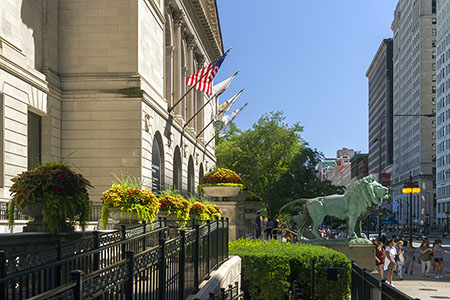
Save Our Symphony: The arts need a new funding plan
Cultural institutions are reeling. Here are four steps they must take so the show can go on.
8-Jun-20 – Millions of Americans are now caught in an awkward pandemic limbo between anxiety and apathy with a healthy dose of anger and blame mixed in. As lonesome as many people are, if you’ve got something to sell them, they are likely to tell you to just leave them alone. And even if you do capture a moment of their attention, they’re disinclined to make purchase decisions anyway, other than buying too much toilet paper. States may be in assorted stages of reopening but it’s pretty hard to imagine the world rushing back to business as usual when millions of people aren’t even sure about their own job and employment prospects. Our time horizons have shrunk, our vision forward is blurred at best, and the overwhelming uncertainty of so many things in our lives has had a paralyzing impact on the emotions and behavior of a huge portion of the population. The inescapable fact is that our overall willingness to make any material commitments has been badly shaken. It’s become abundantly clear that there is a direct and exponential correlation between the expected length of any given commitment and the increasing unwillingness to enter into any such undertaking. Ask me what I’ll be doing next week, and I have a fair idea. Ask me how the next year looks at the moment and I haven’t a clue.
So many expenditures, investments, and donations that were minor and automatic just a few months ago are now material and worth a second or third look. Culture and the performing arts – theater, music, museums, and even sports – are among the first and easiest places to make cuts in our more constrained spending. Unfortunately, the financial structures of so many of these institutions are largely front-loaded. They’re dependent on recurring annual subscriptions, year-end contributions, and/or season ticket purchases that provide the early development capital needed each year to create their programming. Money matters more than ever today and, if these institutions plan to survive and even thrive, they’ve got to make a new and concrete plan to go for the gold. This won’t be an easy task for many of these groups because, for the past decade, the economy’s been flush, and they’ve mostly been telling rather than selling. That’s not going to work going forward. They can certainly appeal to people’s better angels and pitch the mission and the long term. Or suggest that – sight unseen – donors pony up and buy some “virtual” tickets for the gala while reminding them that they never attended events for the food anyway.
Money, for now, is more important than mission To succeed in this new environment, organizations have got to forget about pitching their grander mission for the moment, go where the money is, and make whatever deals are necessary to keep the funds flowing and the doors open. If you’re no longer operating in a few months, your mission won’t really matter much. Now is the time to start figuring out new strategies to tap the key folks who can make a difference in the future of your club, charity, company, or congregation. You need to get ahead of the crowd of competitors, anticipate and create compelling and differentiated offers, identify the best prospects, and make your move before things become obvious to everyone else. I’m not talking about addressing all the folks, or even most of the folks; you need to focus on those few – and often new – folks who can make an immediate difference and who have the means, appetite, and interest in acting now. These are not patient people or ones who are used to waiting – or not getting – exactly what they want. Give them a great deal and a compelling reason to act and act immediately. They can decide quickly and step up. Keep in mind that they may not be your usual suspects. Money doesn’t care who makes it. These newbies may be driven by different and less grand or eleemosynary motives and, frankly, you need to be fine with that.
Give them an offer they can’t refuse and let their instincts, their desires, and their selfish emotions dictate the results. When the dust settles, you’ll still be standing, well-funded and pleased with the results. But there are no rewards without commensurate risks. Each organization will need to develop and fashion its own best solution and decide just how far to push the envelope. Here are a few critical things to consider...
Remember the bottom line: when you’re trying to sell something that no one absolutely needs, you’ve got to be selling something else that matters a great deal to them. Status, scarcity, and sex are the big three. For arts and cultural organizations, two out of three ain’t bad.
Photos by Steven Dahlman, Shirin Mozaffari, and Todd Rosenberg.
By Howard Tullman | Loop North News | h@g2t3v.com
|
Tuesday, June 09, 2020
Save Our Symphony
LINKS TO RELATED SITES
- My Personal Website
- HAT Speaker Website
- My INC. Blog Posts
- My THREADS profile
- My Wikipedia Page
- My LinkedIn Page
- My Facebook Page
- My X/Twitter Page
- My Instagram Page
- My ABOUT.ME page
- G2T3V, LLC Site
- G2T3V page on LinkedIn
- G2T3V, LLC Facebook Page
- My Channel on YOUTUBE
- My Videos on VIMEO
- My Boards on Pinterest
- My Site on Mastodon
- My Site on Substack
- My Site on Post
LINKS TO RELATED BUSINESSES
- 1871 - Where Digital Startups Get Their Start
- AskWhai
- Baloonr
- BCV Social
- ConceptDrop (Now Nexus AI)
- Cubii
- Dumbstruck
- Gather Voices
- Genivity
- Georama (now QualSights)
- GetSet
- HighTower Advisors
- Holberg Financial
- Indiegogo
- Keeeb
- Kitchfix
- KnowledgeHound
- Landscape Hub
- Lisa App
- Magic Cube
- MagicTags/THYNG
- Mile Auto
- Packback Books
- Peanut Butter
- Philo Broadcasting
- Popular Pays
- Selfie
- SnapSheet
- SomruS
- SPOTHERO
- SquareOffs
- Tempesta Media
- THYNG
- Tock
- Upshow
- Vehcon
- Xaptum
Total Pageviews
GOOGLE ANALYTICS
Blog Archive
-
▼
2020
(1367)
-
▼
June
(100)
- NEW INC. MAGAZINE COLUMN BY HOWARD TULLMAN
- HOWARD TULLMAN ON BOOTSTRAPPING IN AMERICA
- Coronavirus reality is clobbering Trump Opini...
- BIRTHDAY BOYS
- Trump’s Napalm Politics? They Began With Newt
- MORE FALLOUT FROM RUMP'S AND PENSE'S POISON ABOUT ...
- KEEP TALKING ABOUT THE HOAX WHILE PEOPLE KEEP DYING
- JUST AS FAKE AS DAD
- SAYS IT ALL
- What Do You Tell Your Kids When the Leader’s a Liar?
- BRUNI: THE UNWELCOME AMERICAN
- DOWD: RUMP RUMPLED
- BRUNI: BIDEN'S BEST
- THE WALK OF SHAME - JUST BEGINNING
- JOINING SCOTT KITUN FOR THE LAST WGN RADIO SHOW
- BIRTHDAY BALLOONS
- DO RUMP AND PUTZ THINK THE AMERICAN PEOPLE ARE SO ...
- Trump’s unhinged crusade to destroy Obamacare boom...
- SECOND WAVE (OR MORE OF THE FIRST WAVE) - NOT A PR...
- Mike Pence Touts Constitutional Right to Hold Trum...
- Rump Retreats
- ARE THESE MINNEAPOLIS PEOPLE CRAZY OR JUST STUPID?
- Learn More About the Lisa App
- LIAR IN CHIEF
- WHAT A HAPPY ENDING
- NEW INC. MAGAZINE COLUMN BY HOWARD TULLMAN
- Loop North News - Are You Ever Going Back to the O...
- PLEASED AND PROUD TO SUPPORT THE LISA APP FOR ESSE...
- Senior: America’s Wannabe Autocrat Is in the Home ...
- SUCH A LOVELY SIGHT TO SEE - RUMP GETS DUMPED IN T...
- Rubin: The pandemic Rump cannot ignore
- Bruni: Rump the Troglodyte
- MORE LIES FROM RUMP AND BARR
- DOG'S LIFE
- VISITING WITH SEVERAL OF THE GUESTS IN MIKE'S NEW ...
- RUMP AND BARR TRY TO PULL ANOTHER FAST ONE - DISGU...
- Could They Be Any Dumber in Oklahoma?
- John Bolton Is the Model of a Trump Sellout
- Lisa App at Sinai Hospital Helping to Support and ...
- Bolton’s Book on Rump
- Don't Blame Rump - He Warned Us
- Does Rump Want to Fight for a Second Term?
- Why Do Rump Supporters Act Like His Election Is Ce...
- Bankrupt Hertz Is a Pandemic Zombi
- Rump and Pence Are Scrambling to Explain Away Coro...
- The Embarrassment of Democrats Wearing Kente-Cloth...
- NEW INC MAGAZINE BLOG POST BY HOWARD TULLMAN
- The Court-Martial of Donald J. Rump
- Ask Not What President Rump Can Do for You
- Howard Tullman Joins Bob Sirott on WGN Radio to Ch...
- AN AMAZING ANSHE EMET MINI-CONCERT THANKING FIRST ...
- GUESS WHAT"S TRENDING UP. GUESS RUMP DIDN'T HAVE ...
- It's Rump's Revolution
- Economic Reality Bites Wall Street and Rump
- A Way of Lies
- AMERICAN PSYCHO - JARED KUSHNER
- TOO SCARED TO FACE THE PEOPLE
- BARR - ANOTHER STUPID BULLY
- He Is Even Dumber Than We Thought
- Glasser - Trump Hates Losers, So Why Is He Refight...
- Cohan: What’s Behind the Bad-News Market Boom
- Why Does Rump Lie?
- Keeper Now
- Save Our Symphony
- New INC. Magazine Column by Howard Tullman
- Howard Tullman Video with Gather Voices
- Mazel Tov Cocktails
- NY Times: Is This the Trump Tipping Point?
- The New White House Wall
- Bible Bearer
- RUMP: "I DON'T TAKE RESPONSIBILITY"
- RUMP: NOT HIS BIBLE - "A" BIBLE
- THE COWARD VERSUS THE COMMANDER
- Meathead
- Stephens: Donald Trump Is Our National Catastrophe...
- Remnick: A Racist in the White House
- Chris Rock
- "It's A Bible..."
- Dan Schmidt - Great piece
- Greg Dobbs - Boomer Cafe
- We’ve Now Entered the Final Phase of the Trump Era
- The Troll in Chief's Fake War with Twitter
- Bruni: The End of College as We Knew It?
- Stan Lee
- Trump’s photo with his loyalists was a vulgar mess...
- Pandemic U
- LITTLE WEAK DONNY "BONE SPURS" STRIKES BACK
- R.I.P. - THE BEST REUBEN IN TOWN - SAD TO SEE THI...
- RUMP LIES LIKE NORMAL PEOPLE BREATHE.
- Frank Bruni...Why I'm So Heartsick....
- Rump
- CAN'T WE?
- A Tribute to Christo’s Unforgettable Art Works
- So Much Better to Say Nothing
- Bret Stephens
- WILL: Trump must be removed. So must his congressi...
- Desmond Tutu
- New INC. Magazine Blog Post by Howard Tullman
- Greg Dobbs: A bookend for American boomers: Back ...
-
▼
June
(100)




